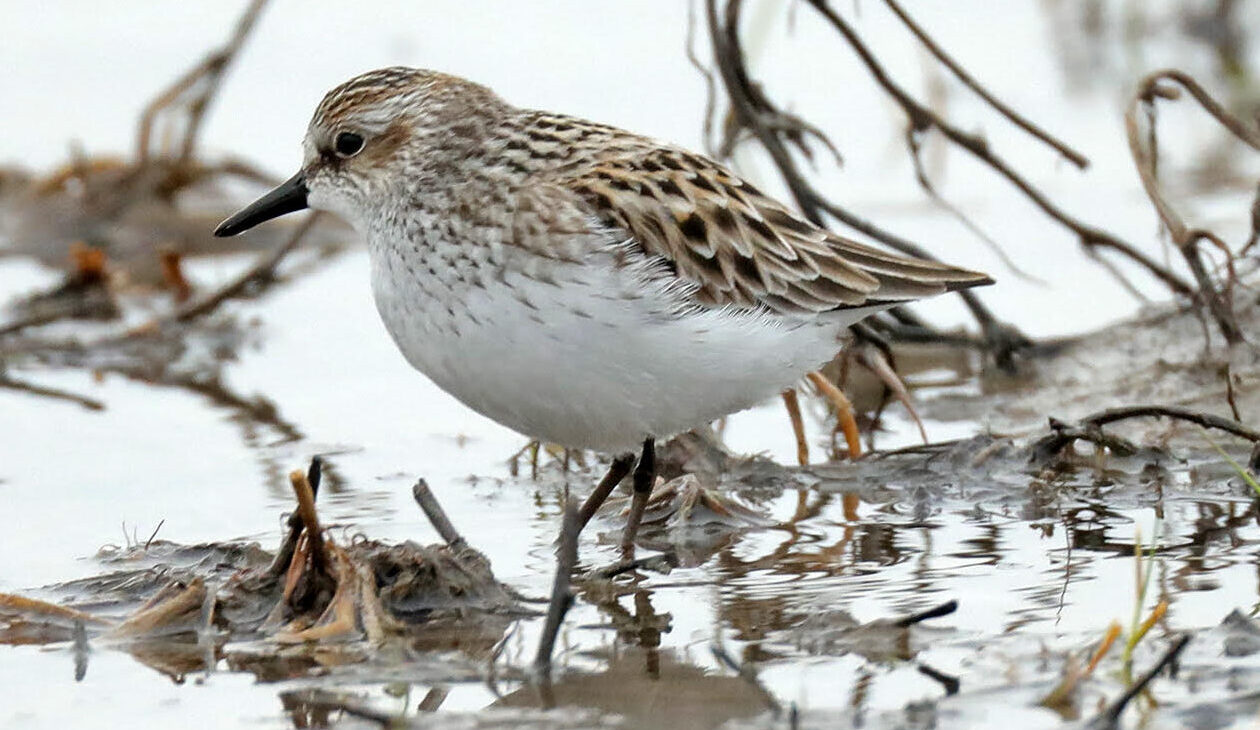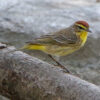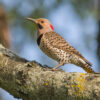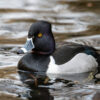Semipalmated Sandpiper, Calidris pusilla
Bill Rowe
Let’s begin with a reminder that the smallest sandpipers, the sparrow-sized ones, form a distinctive subset known as “peeps” in the U.S. (or “stints” in the U.K.). Worldwide, there are seven species, three of them North American; last August we discussed the tiniest one, the Least Sandpiper. Barely larger, by at most half an inch, is the Semipalmated Sandpiper, which is generally the commonest peep along the Atlantic coast but can also be the commonest one in the Midwest at certain times—like right now, in the latter half of May and early June. These little birds are on their way to the Arctic tundra, where they will get their nesting done in just a couple of months and then start their return journey, heading all the way to the coasts of South America. Like other shorebirds, they rely on stopovers in shallow wetlands—rain pools, floodwaters, the muddy edges of lakes and marshes—to provide them with the tiny animal prey that will keep them going. This habitat is patchy and scarce in Missouri, reliable in a few spots but often here one week and gone the next; so the shorebirds have to keep seeking wet places in order to feed, and birders have to keep seeking them in order to watch shorebirds. Name info: “Semipalmated” means “having partial webs between the toes.” This pertains to two of the seven peeps, the Semipalmated and its close cousin the Western Sandpiper. In exceptional cases, with good photographs, the absence of webbing can help distinguish a rare Eurasian stray from those two.
IDENTIFICATION: The banner photo, above, shows a Semipalmated in breeding plumage, about as bright as they get. At a distance, they may look at lot like Leasts. Look for the following: (1) Slightly larger size, noticeable when side by side; (2) dark legs (dark olive to black) as opposed to yellow or greenish, but note that this can be hard to judge in poor light, or if a Least has mud on its legs; (3) overall grayer color than Leasts, which are bright brown above, often with pale stripes down the back; (4) straighter and stouter bill, although this can vary. In May, you must also distinguish Semipalmateds from their companion White-rumped Sandpipers, which are a bit larger, with longer wings that stick out beyond the tail, streaks extending along the flanks below the wings, and—if you get a lucky view—a white band all the way across the rump area above the tail, instead of white sides to the tail with a black “divider.” (Check field guide illustrations.) The most similar species, especially in fall, is the Western Sandpiper, but this bird is uncommon at best and will be saved for its own future article.
ST. LOUIS STATUS: Common in April and May; especially noticeable in late May and into early June, when most other sandpipers have departed except the White-rumped, which often joins the Semipalmated in mixed flocks. Return migrants are seen as early as mid-July, becoming common in August and September but gone after early October (unlike the Least, which may stay into winter).
Learn more and listen to the calls of Semipalmated Sandpipers here.
Featured Photo Credit: Doug Hommert

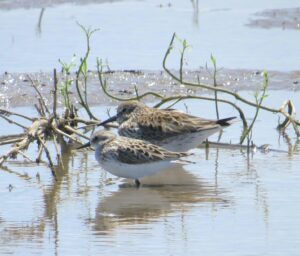
Quiz: Identify these two.
See answer at bottom.
Photo Credit: Bill Rowe
Semipalmated in front, White-rumped in back; see ID section.
Photo Credit: Bill Rowe
Answer: Right-hand bird is a bit larger, grayer, with black legs; thus Semipalmated. Left-hand bird is smaller, browner, with pale back stripes and thin, tapered bill; thus Least.

